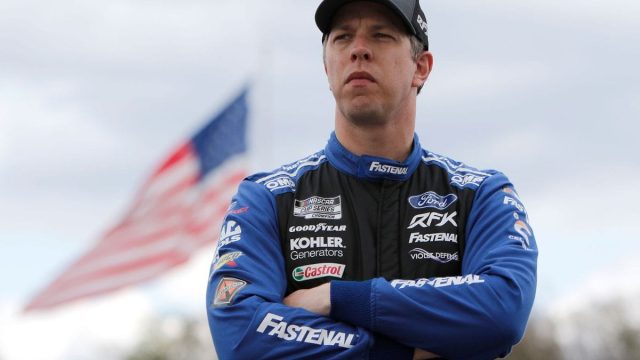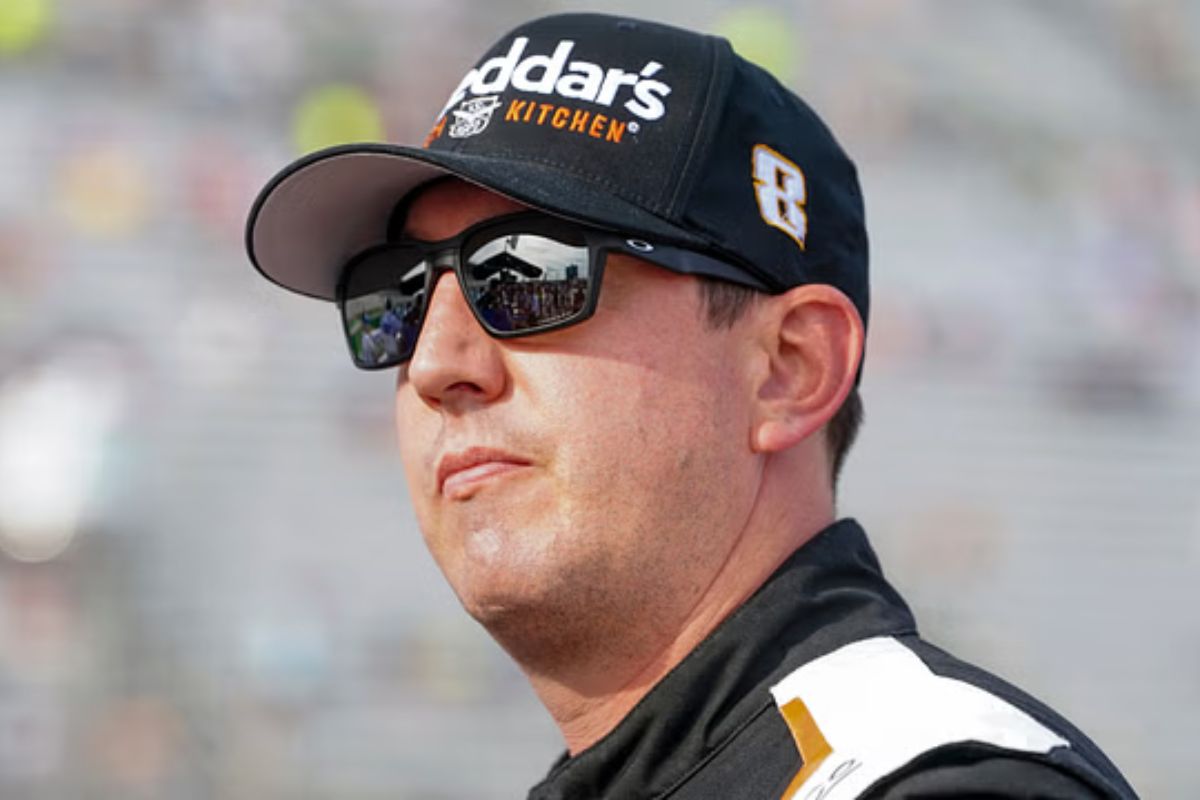Brad Keselowskis Dramatic Top-5 Finish at Michigan: Brad Keselowski‘s recent performance at Michigan International Speedway serves as a compelling case study in resilience and adaptability under strain. Despite starting from the 15th position and contending with mechanical issues that could have derailed his strategy, Keselowski’s ability to navigate through intense competition and adverse weather conditions culminated in a remarkable top-5 finish. His frank acknowledgment of ongoing challenges, “We were having some issues,” raises questions about the implications for his upcoming playoff strategy and the potential impact of Kyle Busch‘s criticisms. What adjustments will Keselowski need to make to maintain his competitive edge?
Key Highlights
- Brad Keselowski finished 5th at Michigan after starting 15th, showing his ability to adapt under challenging conditions.
- The race included significant weather delays, affecting team strategies and vehicle performance throughout the event.
- Keselowski faced mechanical issues that complicated his race, which he acknowledged as contributing to the difficulties he experienced.
- Key moments included tactical overtaking during overtime, despite the challenges posed by his vehicle’s reliability.
- His top-five finish indicates a potential positive shift for Keselowski as the playoffs approach, despite ongoing performance concerns.
Brad Keselowski’s Near Miss at Michigan
Brad Keselowski’s recent performance at Michigan International Speedway serves as a poignant reminder of the razor-thin line between success and disappointment in NASCAR. The Michigan-born driver, a co-owner of RFK Racing, has become synonymous with near victories at his home track, which has yet to witness a native driver clinch a Cup Series win. His 27 starts at MIS include three runner-up finishes and nine top-five results, illustrating a consistent trend of coming agonizingly close to breaking that elusive barrier.
In the most recent race, held over two days due to inclement weather, Keselowski’s 5th-place finish marked his best result in the last eight events. Yet, it also emphasized the frustration of narrowly missing victory once again, particularly against the backdrop of Tyler Reddick’s success. This raises critical questions regarding the factors at play: Is it merely a case of bad luck, or does it reflect a persistent inadequacy in speed and strategy?
As he continues to navigate the challenges of the sport, the search for that initial victory at MIS remains a tantalizing quest, one that highlights the unpredictable nature of racing and the relentless pursuit of excellence.
Brad Keselowski’s Race Performance
Amid the swirling excitement of race day at Michigan International Speedway, Keselowski’s performance emphasized both his resolve and the challenges faced by RFK Racing. Starting from 15th position, he displayed a commendable ability to adapt and improve throughout the race, finishing 7th by the end of Stage 1. This initial ascent not only demonstrated his driving skill but also highlighted the effectiveness of his team’s tactical adjustments.
As the race progressed, even amid rain delays and uncertainty, Keselowski maintained focus and perseverance. Climbing to 6th by the end of Stage 2, he positioned himself well for a potential late-race surge. Ultimately, his 5th place finish reflected adaptability and tenacity under strain, yet it also pointed out the lingering issues that RFK Racing must address.
Following the race, Keselowski openly acknowledged the difficulties, stating, “Yeah, we were having some issues,” and emphasized the need for further refinement in their performance.
“Yeah, we were having some issues, and unfortunate that we’ll have to go back and work on whatever that was and try to get better.” – brad
Despite these challenges, Keselowski’s insights reveal a deeper understanding of the subtleties of race strategy and vehicle dynamics. He noted that the car initially felt like a “10th to 15th place car,” but the adjustments made by his team allowed him to compete more effectively, ultimately placing him in a position to contend for the victory.
“Yeah, you know, we start off the race, kind of like a 10th to 15th place car. The team made some adjustments, we got to where we were about a 5th-place car and just kind of hung around there and was in a position to steal one.” – brad
While the outcome may not have met his ambitions, Keselowski’s race performance at Michigan serves as a symbol of his resilience and the potential for improvement within RFK Racing.
Turning Point and Final Moments
Although the race at Michigan International Speedway was marked by numerous twists and turns, the primary overtime served as a crucial turning point for Keselowski. As the race leaders tussled for supremacy, Keselowski tactically positioned himself to capitalize on any potential errors. His skilled maneuver allowed him to seize third place on the restart, showcasing his racing insight amidst adversity.
Key moments that defined this critical point include:
- Keselowski’s opportunistic third-place grab during the initial overtime.
- The intense wheel-to-wheel competition between the race leaders.
- Ross Chastain’s spin, which prompted a caution and subsequent overtime.
- The mechanical issues that plagued Keselowski during the double-overtime restart.
- The unfortunate impact on William Byron, who lost the lead due to Keselowski’s drafting issues.
However, the double-overtime restart presented its own challenges. Starting from the second row, Keselowski encountered a loss of momentum at the green flag, resulting in a drop to fifth place.
This setback disrupted his race and had considerable consequences for William Byron, who, without Keselowski’s drafting support, surrendered the lead to Tyler Reddick. The race concluded with Reddick clinching his second victory of the season.
Kyle Busch’s Criticism
Following the dramatic events of the overtime restart at Michigan International Speedway, Kyle Busch did not hesitate to voice his frustration regarding Brad Keselowski‘s tactics in Turn 1. Known for his openness, Busch took to social media to express his disbelief at Keselowski’s sudden deceleration while entering the turn, which resulted in a collision that impacted multiple drivers. His tweet encapsulated the intensity of his reaction: “What the f*** was the 6 doing?!”
The incident stemmed from Keselowski’s struggles with engine issues throughout the day, as he later explained. These mechanical problems forced the RFK Racing driver to alter his pace unexpectedly while following William Byron, leading to the contact with Busch’s No. 8 Chevy.
Such unpredictable movements in high-stakes racing can create dangerous situations, as evidenced by the wave effect that ensued, sending shockwaves through the grid.
Busch’s response highlights the broader implications of racing tactics and vehicle reliability in the sport. The incident raises critical questions about responsibility on the track, particularly when a driver’s performance is compromised.
While Keselowski attributed his actions to car troubles, the consequences of his decisions affected not only his race but also the outcomes for others.
“We just had a couple of issues today with the engine shutting off. It was frustrating, but it was just part of our day. We were probably that fourth or fifth-place car, and the way the race played out, [Reddick] got by us, and he was really fast. He deserved to win the race.” -brad
In a sport where split-second decisions can dictate the path of a season, Busch’s criticism highlights the delicate balance between competitive strategy and safety—a conversation that is increasingly pertinent in today’s NASCAR landscape.
Outlook for Keselowski and Kyle Busch
As the NASCAR season races toward its finale, the outlook for both Brad Keselowski and Kyle Busch is fraught with urgency and opportunity. Their recent performances, marked by Keselowski’s impressive top-five finish at Michigan and Busch’s resurgence with a fourth-place finish, highlight the vital point at which they find themselves in the championship chase.
- Playoff Implications: With limited races remaining, both drivers are acutely aware of the stakes.
- Form and Momentum: Keselowski’s recent success could signal a turn in his season, while Busch’s finish marks a notable return to form.
- Stress to Perform: Busch, in particular, faces mounting stress to secure a playoff spot, emphasizing the need for tactical racing.
- Team Dynamics: The performance of their respective teams will play a significant role in their success as the season draws to a close.
- Long-term Goals: Both drivers must balance immediate playoff aspirations with their broader career objectives.
For Keselowski, the Michigan finish highlights potential, suggesting that with the right adjustments, he could be a formidable contender in the playoffs.
Conversely, Busch’s recent run, while encouraging, must translate into consistency if he hopes to avoid the disappointment of missing the postseason.
As they approach the final races, the combination of skill, strategy, and a bit of luck will be vital for both drivers to optimize their chances of playoff success and establish their legacies in NASCAR.
News in Brief: Brad Keselowskis Dramatic Top-5 Finish at Michigan
Brad Keselowski’s top-5 finish at Michigan International Speedway exemplifies the resilience required in competitive racing, particularly amid mechanical challenges. The ability to navigate through adversity, especially with the impending playoffs, highlights the critical nature of vehicle performance and driver adaptability. As rivalries intensify, particularly with Kyle Busch, the focus shifts to necessary refinements in strategy and execution. The outcome at Michigan serves as a crucial learning experience, setting the stage for future races and heightened competition.
ALSO READ: Brad Keselowski Responds to Austin Dillon’s NASCAR Penalties After Richmond Chaos



